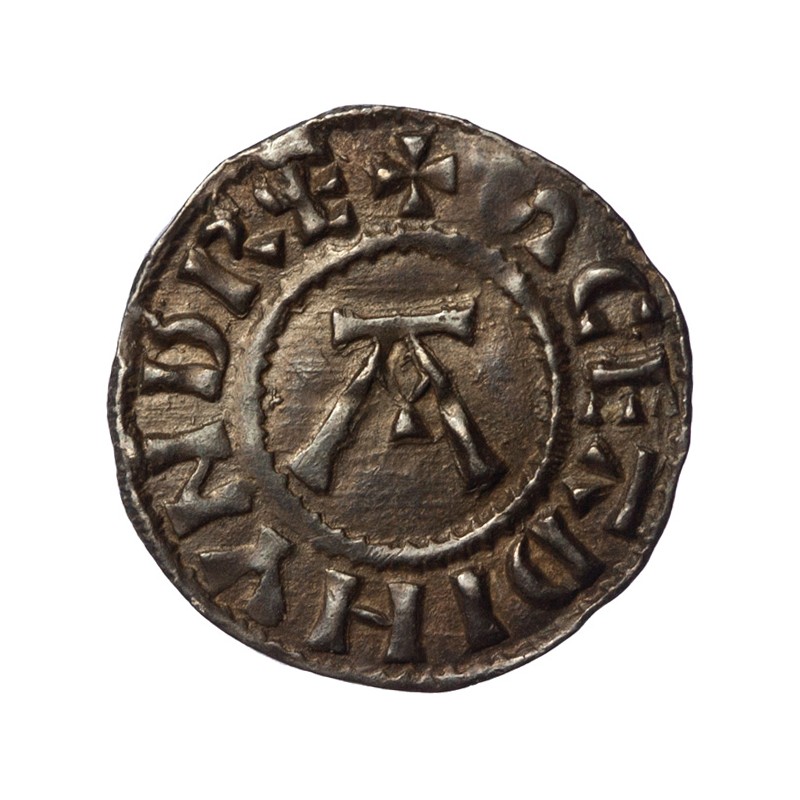






Anglo-Viking St Edmund Silver Penny
Memorial coinage
East Anglia
Gisalca/Gisleca
1.30g 18.4mm
Spink – 960
North – 483
Obverse:
SC EADIMVND REX. Large, chevroned A in centre.
Reverse:
Я‾ISLECA MOE. Cross pattée.
Good very fine with a pleasing tone.
From the S. Maguire Collection [bt from us Jan 2017 - Ref B0153]
"The Scandinavian rulers in the Southern Danelaw struck their distinctive coinage in the name of St Edmund, king and martyr, for some twenty years from c.895, continuing probably until Edward the Elder's recovery of the region in 917/18. The old kingdom of the East Angles, ruled over by Edmund between 854 and his death at Viking hands in 869, appears to have been under Viking control during the 870s and under the direct rule of King Guthrum following the settlement there of his Danish army in 880.
When a distinctive independent coinage was introduced for the Southern Danelaw in the mid-890s, somewhat surprisingly it took as its obverse inscription an invocation to the martyred East Anglian king Edmund, some early coins offering the full vocative form SCE EADMVNDE REX ('0 Saint Edmund the King!'). To reinforce this message designs were adopted that were similar to those of the coinage struck in the latter part of the reign of Edmund, a large central A on the obverse and a simple cross, rather than Edmund's cross-and-four-pellets, on the reverse. There is considerable uncertainty about precisely where the coinage was struck. Although primarily an East Anglian issue, evidence from finds and from tracing moneyers into earlier and later coinages suggests that its production also extended into parts of eastern Mercia."
M. Blackburn & H. Pagan. (2002) ‘The St Edmund coinage in the light of a parcel from a hoard of St Edmund pennies’ British Numismatic Journal Vol. 72, pg 1-14.
Data sheet
Specific References